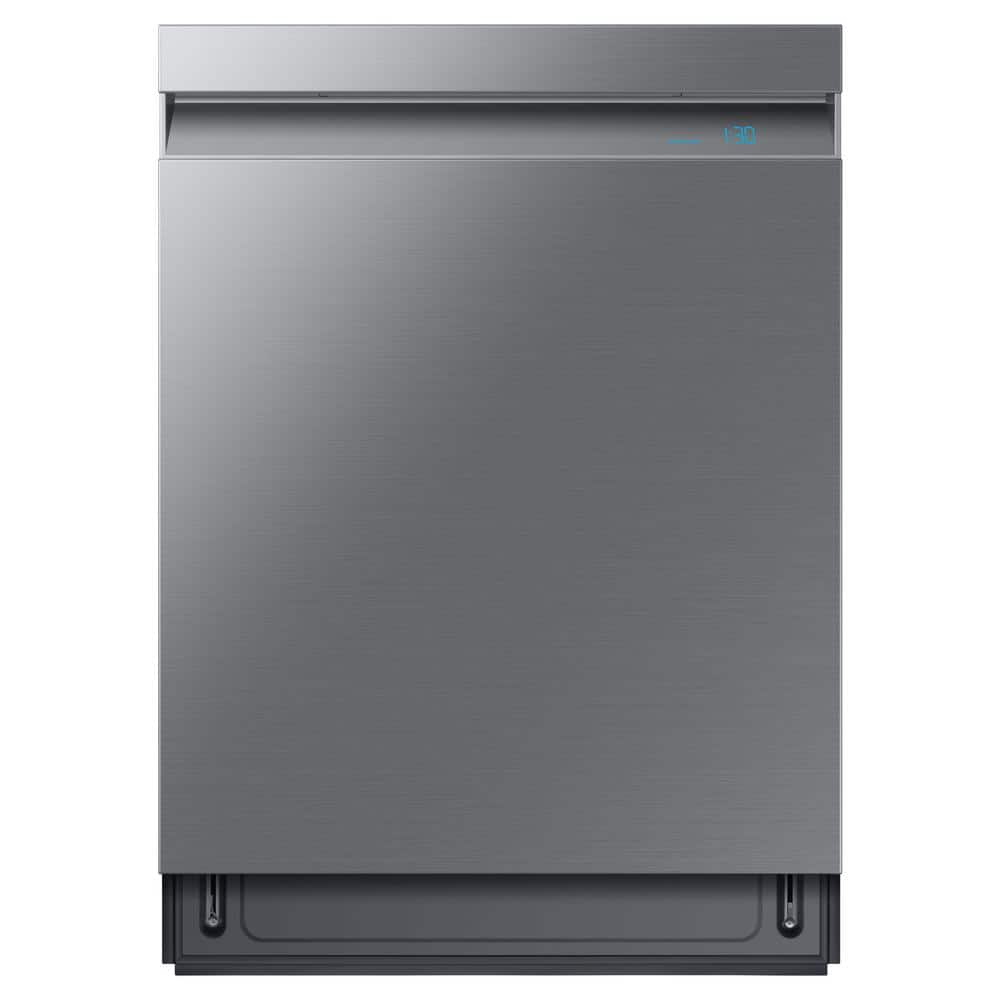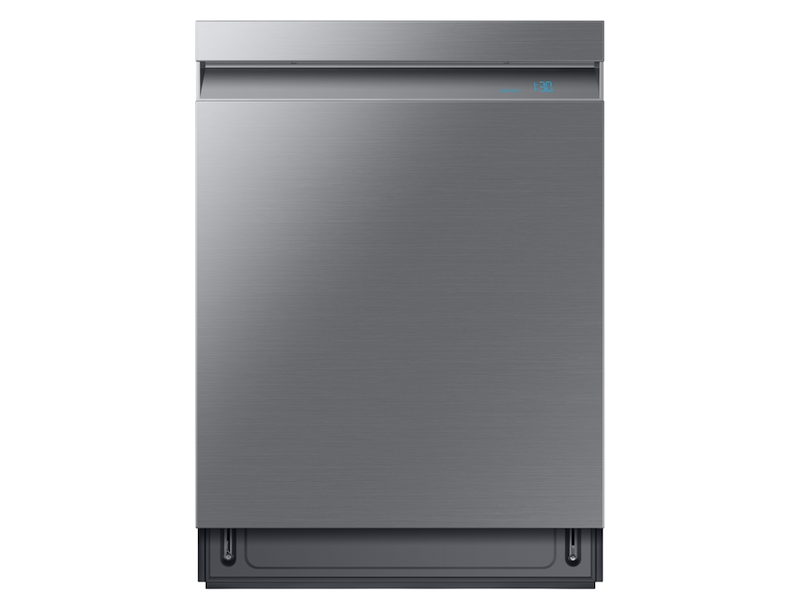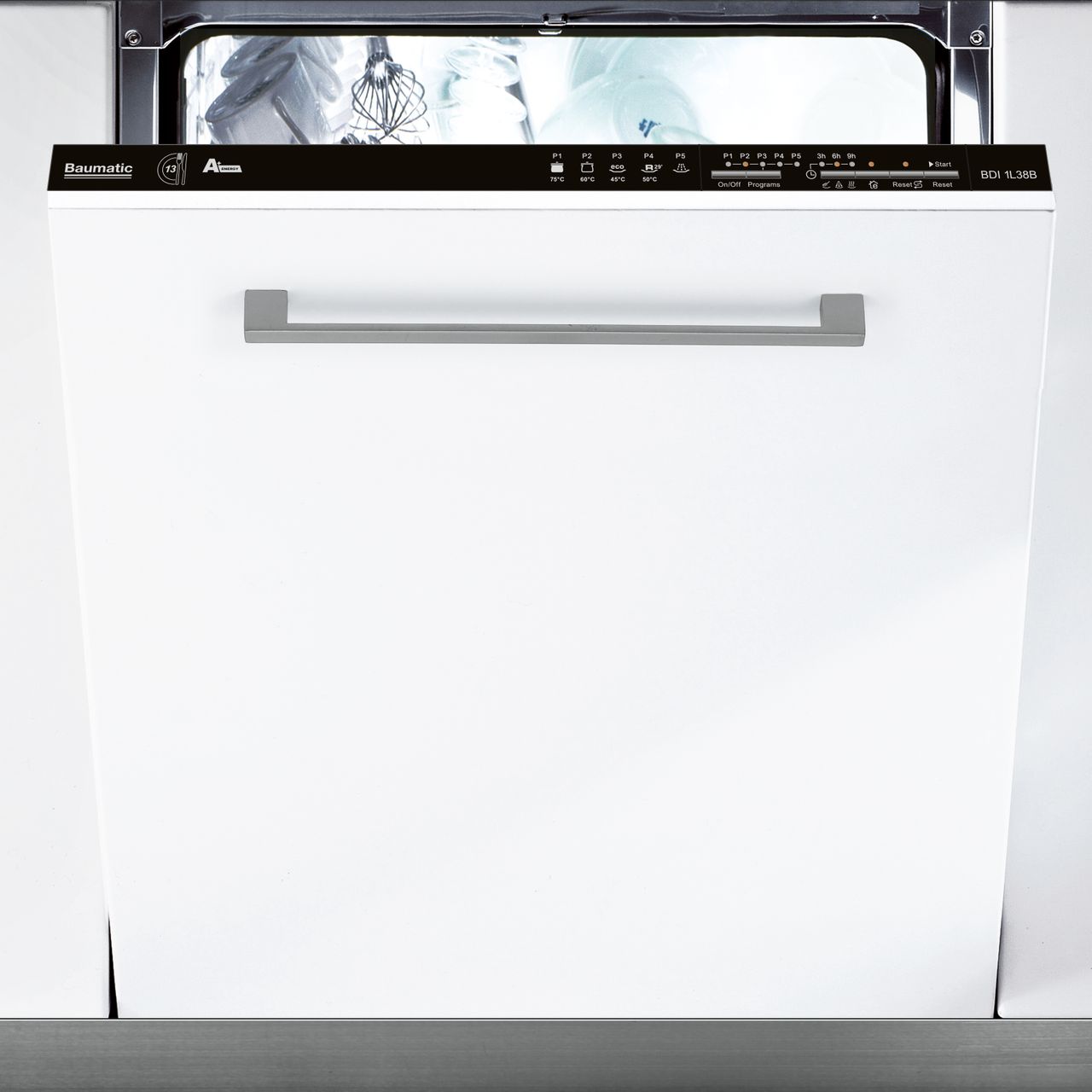Samsung 24 in. Top Control Tall Tub Dishwasher in Fingerprint Resistant Stainless Steel with AutoRelease, 3rd Rack, 39 dBA
39 dBA Quietest wash cycles at whisper sound levels. AquaBlast jets provide corner to corner cleaning coverage. Door automatically opens to improve drying.
The Samsung dishwasher with Linear Wash technology has a one-of-its-kind sliding spray bar that moves in linear motion to provide corner to corner coverage for complete cleaning. Whisper quiet 39 dBA wash cycles allow you to run the dishwasher anytime of the day. The AutoRelease Door opens automatically to circulate air and help improve drying performance.
- Linear Wash System – AquaBlast jets provide corner to corner coverage for superior cleaning
- Whisper Quiet Cleaning – Less noise and less disturbance with virtually silent wash cycles at 39 dBA
- AutoRelease Door – At the end of a cycle, the door automatically opens to circulate air and improve drying performance
- The flexible 3rd rack provides extra space to load silverware
- Zone Booster provides additional water stream to bottom left area for hard to clean pots and pans
- Fingerprint resistant exterior helps reduce smudges for an everyday great appearance
- Premium ball bearing rails assure smooth back and forth movement even with heavy items on it
- Remotely monitor and control the dishwasher from your smartphone with Wi-Fi connectivity
- Speed up the wash with Express 60 cycle for lighter loads
- Easily maneuver the adjustable racking up and down to maximize space when you’re washing tall items
- Wash up to 15 place settings in a single load, ideal for clean up after entertaining
- Front panel LED display conveniently shows remaining time for the wash cycle
- ENERGY STAR rated, which means lower energy bills and carbon footprint than non-certified models (only uses 239 KWH/yr)
- Special insulation reduces noise to 39 bBA
Additional information
| Cut-Out Depth x Height x Width (in.) | 24 x 34.13 x 24 |
|---|---|
| Depth - Door Shut (with Handle) (in.) | 24 |
| Depth - Door Shut (without Handle) (in.) | 24 |
| Depth With Door Open 90 Degrees (In) | 46 |
| Dishwasher Size (in.) | 24 |
| Height - Maximum (in) | 35 |
| Height - Minimum (in) | 33.88 |
| Product Depth x Height x Width (in.) | 25 x 35 x 23.88 |
| Certifications and Listings | ETL Listed,Energy Star,NSF Certified |
| Manufacturer Warranty | One (1) Year All Parts and Labor, Five (5) Year Limited on Printed Circuit Board and Interior Nylon Racks |






by Sprinkler
i love this dishwasher because it is super quiet and love the black stainless steel no fingerprint feature as well. unfortunately, it is chipping at the control section. this dishwasher is wiped down only with a small amount of soap and water using a microfiber cloth. it’s sad that it’s only a year old and this is happening to it.
by Lines
This model is nice but it doesn’t dry at all unless rinse aid is used.